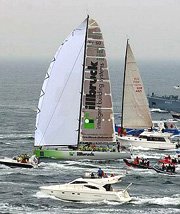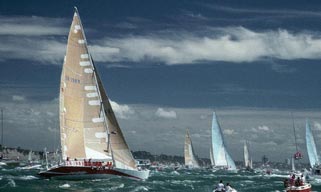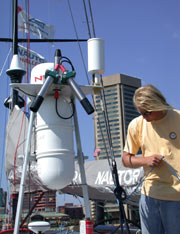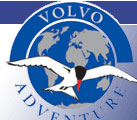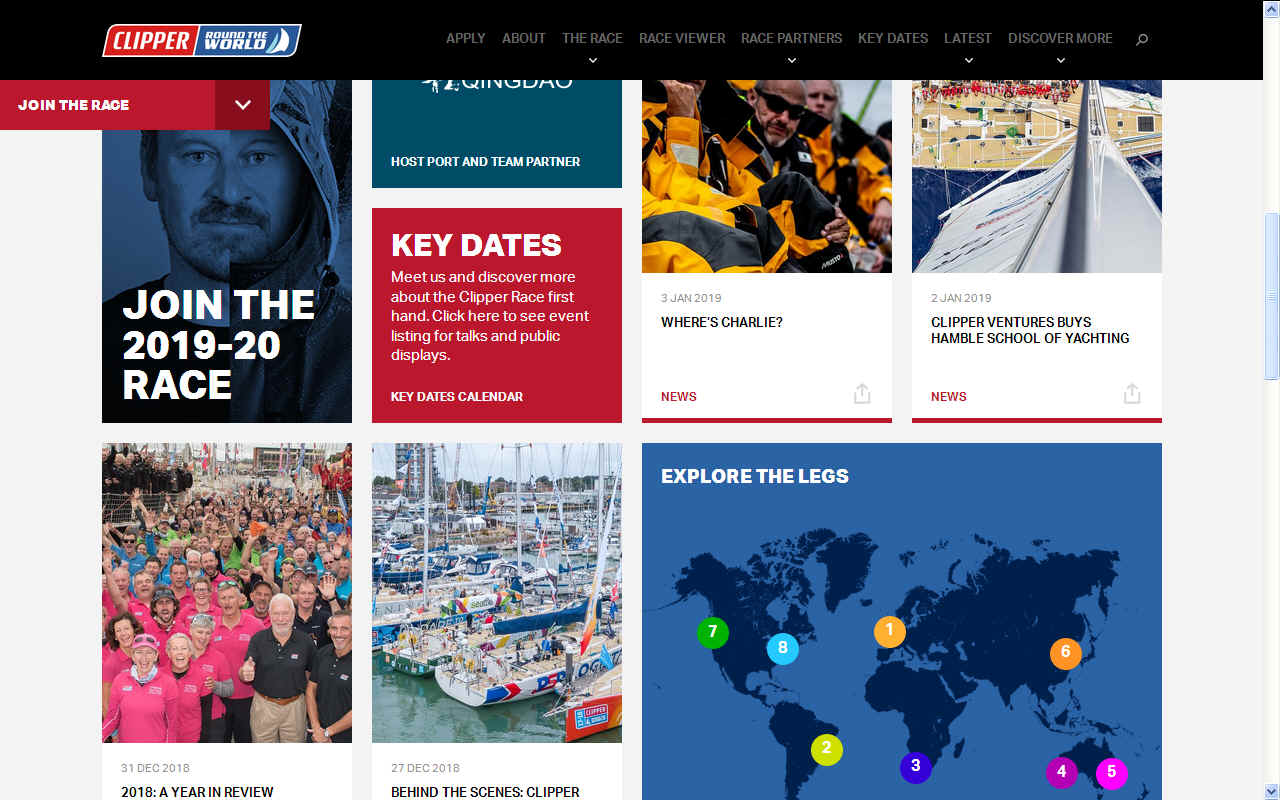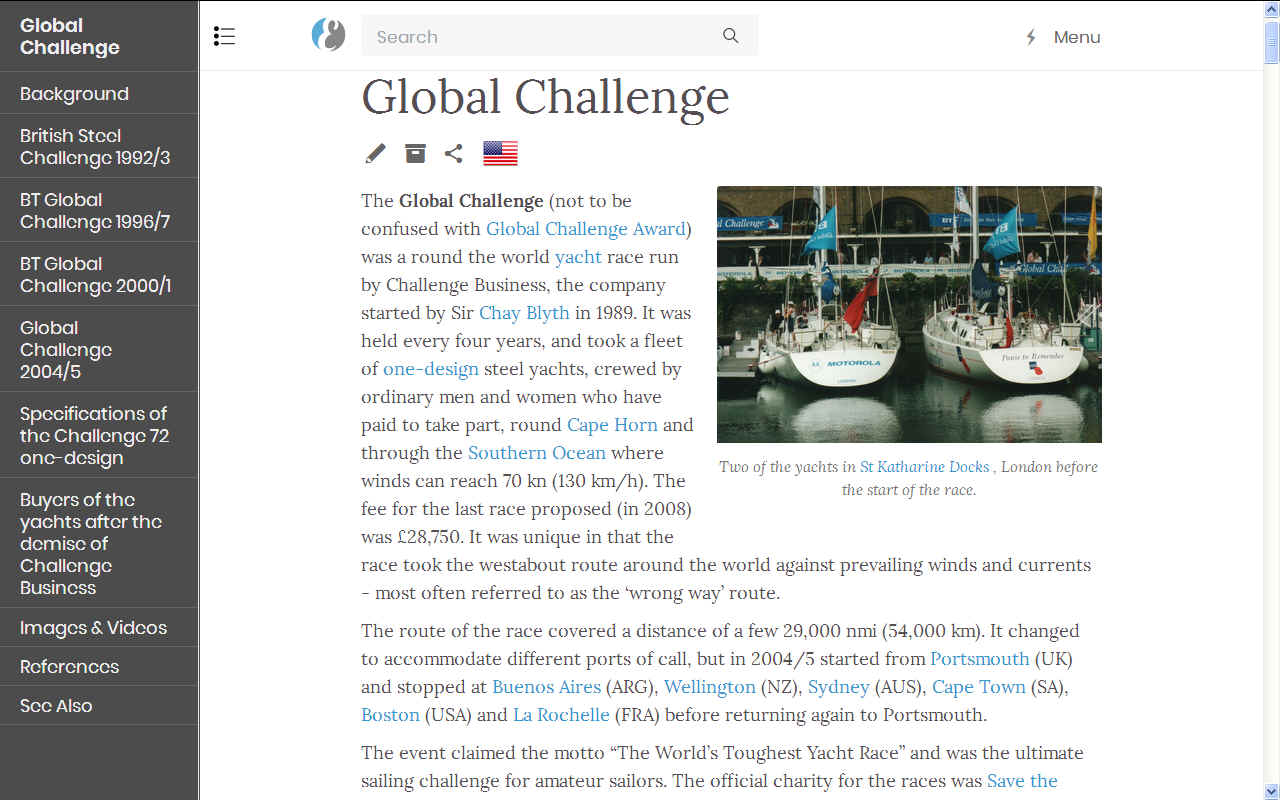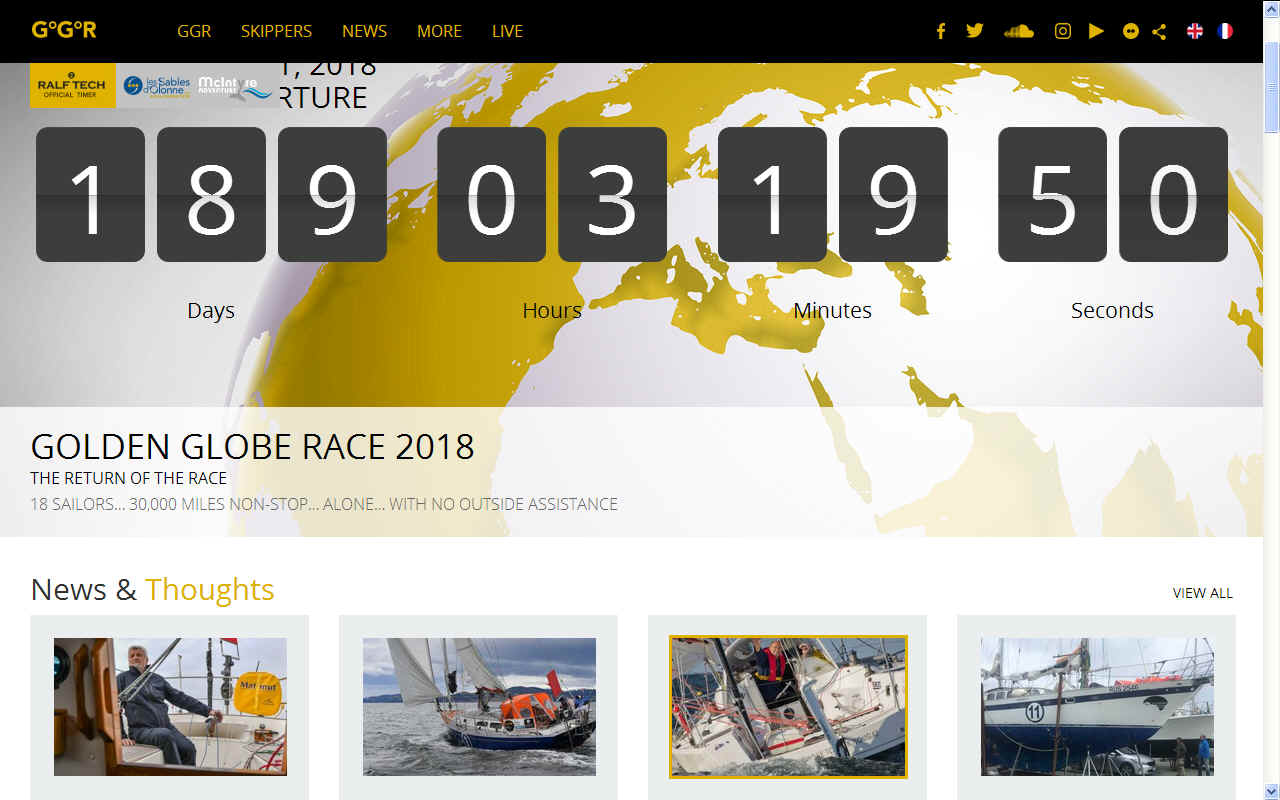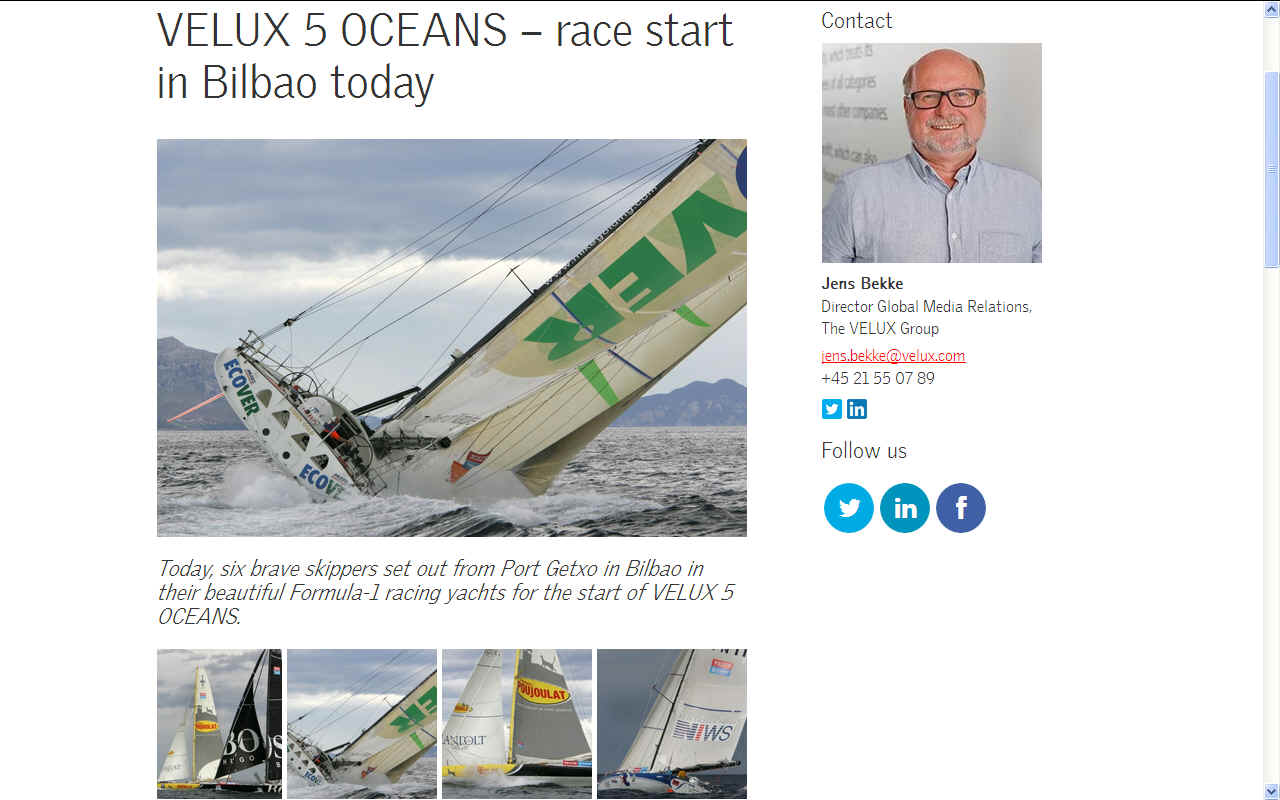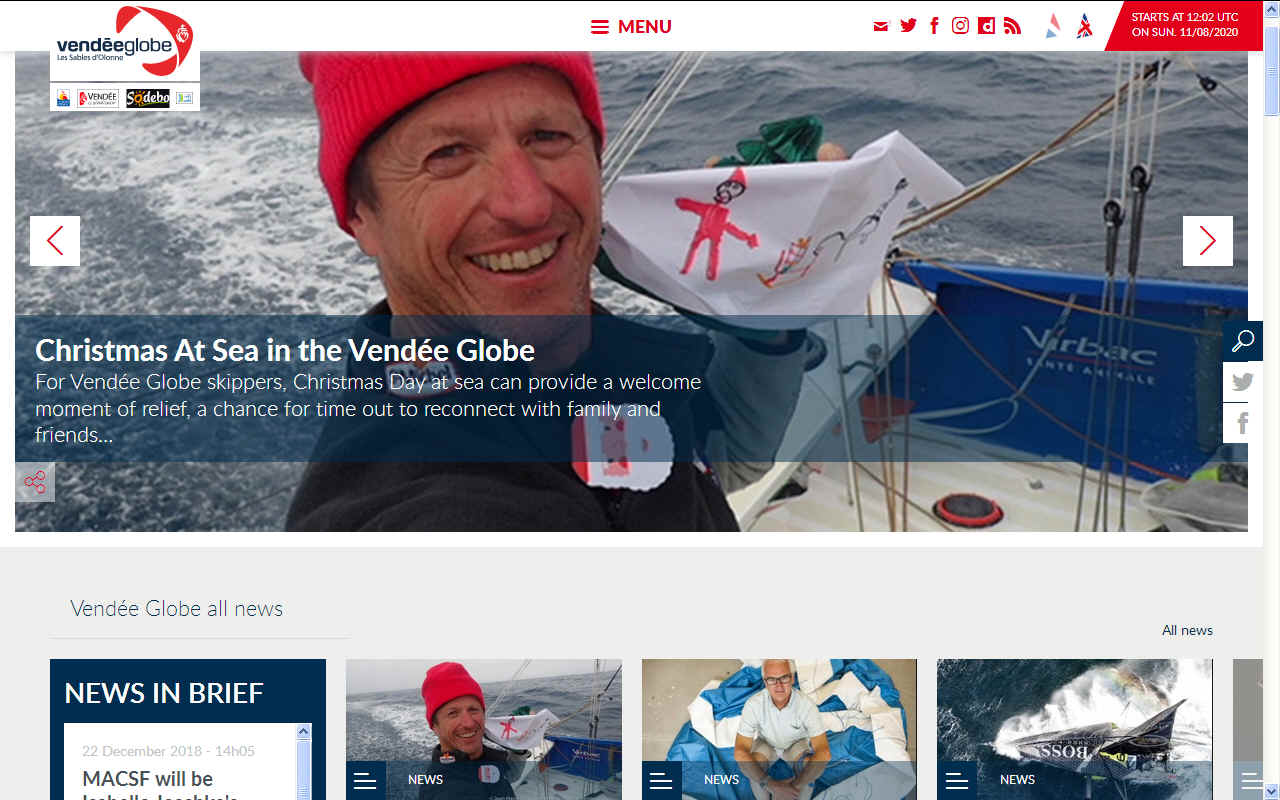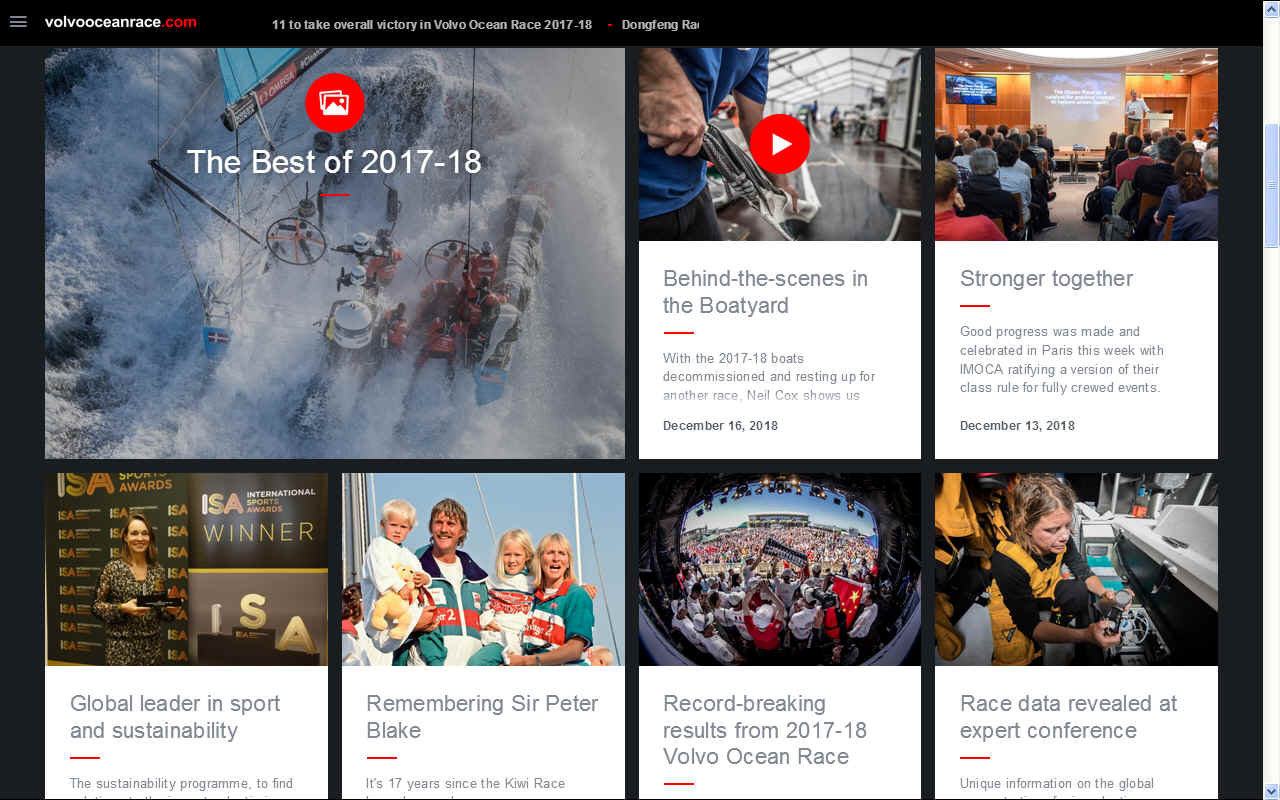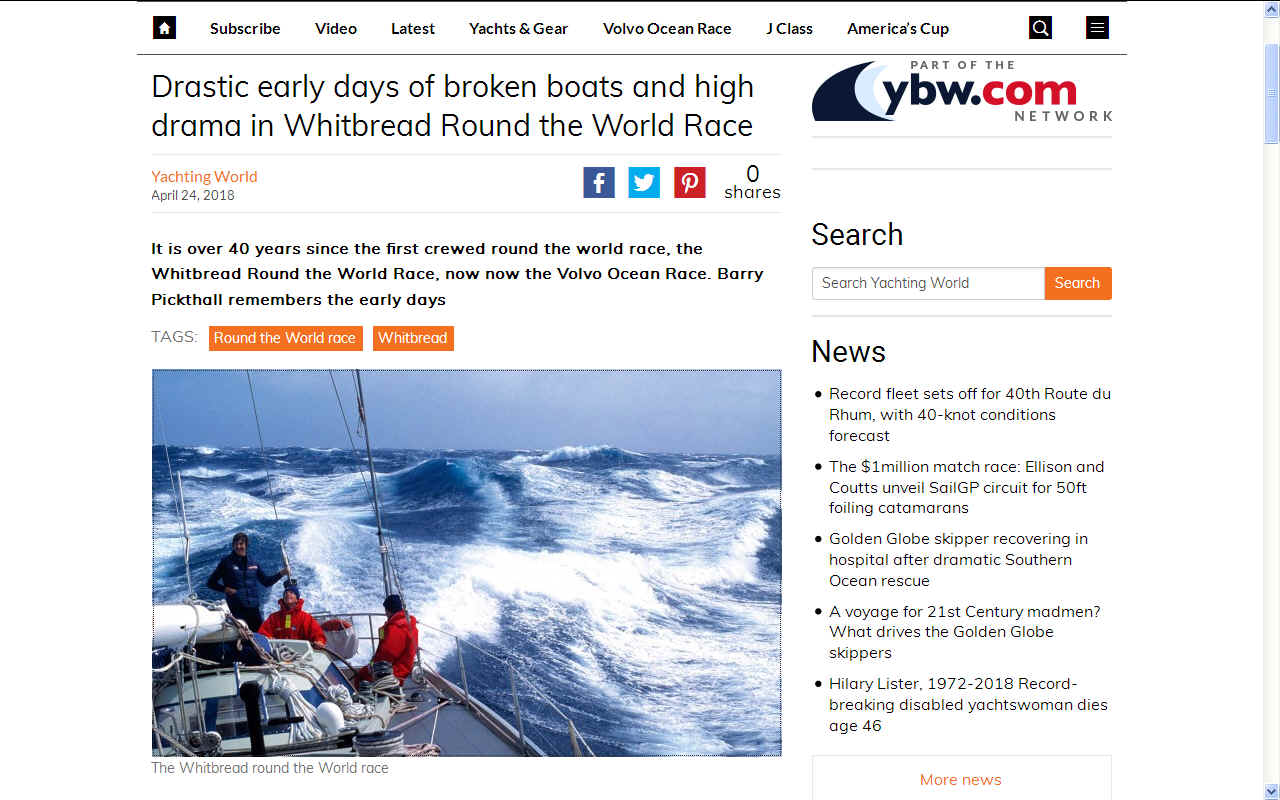|
|
|||||||||||||||||||||
|
HOME | BIOLOGY | BOOKS | FILMS | GEOGRAPHY | HISTORY | INDEX | INVESTORS | MUSIC | SOLAR BOATS | SPORT |
|||||||||||||||||||||
|
German Team Wins Marathon Volvo Ocean Race June 11, 2002
After 32,700 nautical miles, four oceans, nine countries, and ten ports, the German boat illbruck returned home today as the winner of the marathon Volvo Ocean Race. Tens of thousands of spectators welcomed the victorious illbruck and seven other boats to Kiel at the conclusion of an epic sailing race that has been hotly contested since it began last September in Southampton, England. Spectator boats were so abundant in the Kieler Foerde home stretch that some people joked it was possible to cross the water without getting your feet wet.
The happy skipper, American John Kostecki, was enthusiastic both before and after his traditional harbor dunking. "What an awesome moment, its just amazing," Kostecki said of the heartfelt welcome as he sported the race trophy. "Ive never seen anything like it before." Describing the intensity and hard work of the past nine months, he said the victory moment made it all worthwhile: "We had an incredible battle on our hands, as we had great competition from the other teams, and they pushed us to fight for every point."
Volvo Ocean Race - Illbruck
In their journey around the globe, the teams endured harsh and spartan conditions—bitter cold and searing heat, little sleep, monotonous food, and injuries both nagging and serious. Through it all, they battled to drive their boats at maximum speed 24 hours a day.
Late Redemption
The ninth and final leg covered 250 nautical miles, a fraction of the race's total length. The sprint from Göteborg, Sweden, to Kiel, Germany, however, was more than simply a coronation for the illbruck Challenge team.
Patchy and unpredictable winds made the final day of the race a frustrating jaunt for some; for others, it was the sweet conclusion of a demanding adventure.
Norwegian entry djuice dragons, which generally performed poorly throughout the race, gained some redemption by winning the final stage.
Amer Sports Too, the race's only all-women entry, narrowly missed a podium finish in the leg by arriving fourth at the dock, though the team did beat teammate Grant Dalton's Amer Sports One, the overall third-place winner. It was a satisfying result for a team that showed amazing tenacity through a race laden with mishaps and tough luck.
On the race's seventh leg—from Annapolis, Maryland, to La Rochelle, France—the women's boat suffered a dangerous and crippling loss of part of its mast. Instead of packing it in, the women nursed the boat 400 miles back to Halifax, Nova Scotia, in stormy conditions, with the top of the mast lying on the deck.
The boat was loaded onto a container ship bound for Liverpool, England, then transferred to Southampton. Working feverishly, the crew and shore team refitted the boat and sailed it to La Rochelle in time to rejoin the race in leg eight.
"I think it was a nice way to finish for the team because we always knew we had it in us," said skipper Lisa McDonald, whose husband, Neal McDonald, is the skipper of second-place race winner ASSA ABLOY. "We've battled with drama on the high seas, we've worked really hard on our crew work and our communications, and maneuvering of the boat and our working with the sail program, and I think that has started to pay off for us."
"It's just a pity," she said, "we haven't got a few more legs."
Volvo Ocean Race 2005/6 - Youtube
Sweet Results for Pre-Race Favorite
illbruck was the pre-race favorite, and it lived up to its billing by leading throughout and winning all four of the event's long-distance ocean legs. The winning entry's total elapsed time was 123 days, 5 hours, 11 minutes, and 24 seconds.
In a race as demanding as the Volvo, however, nothing comes easy. Winds were both dangerously high and maddeningly inconsistent. The boats battled hazards that included monstrous waves, icebergs, and storms—even waterspouts with winds of up to 60 knots. Leg two, which traversed the Southern Ocean's infamous "Liquid Himalaya," nearly ended in disaster for illbruck when water poured into the bow of the boat. For several hours it was unclear whether the boat was in danger of sinking.
The German entry recovered, however, to win that leg, and went on to display top form throughout the race, although its victory over ASSA ABLOY was not assured until the end of the final leg.
"We were fighting to the end, that is good," said ASSA ABLOY trimmer Richard Mason. "Second place will do until next time."
En route to their victory, the illbruck Challenge team broke the world monohull speed record with a run of 484 miles in one 24-hour stretch.
Whitbread Race - Auckland, New Zealand
Mixed Emotions
The end of the demanding sailing marathon was bittersweet for many of the competitors. "I think we all have mixed feelings about the end," ASSA ABLOY co-skipper/navigator Mark "Rudi" Rudiger said in the race's final hours. "We're all ready for closure, and to stop moving from boat to hotel to boat and so on. But we'll also miss the race, the singular focus, the awesome sailing, and the achievement."
Rudiger said he "never ceases" to be amazed at how time relativity is affected by ocean racing. "It speeds up on land, and slows down at sea," he said. "It seems like forever to get there, but all of the sudden you're there before you know it."
Come the autumn of 2005, the competitors will have the chance to do it all again. Volvo has announced that the next ocean race will kick off somewhere in Europe, although details on the route and the type of boat entries are not yet available.
So, are there any takers among the current entrants? "Right now I'd say no," said ASSA ABLOY's McDonald. "But in about 20 minutes time, after a few beers, I would say yes, of course I would!"
Round-the-World Racers Lend a Hand to Science April 26, 2002
The Volvo Ocean Race is ultimately about speed and competition on the seas. But the competing boats also team with NASA and research institutions to aid oceanic science and environmental education. In the course of the sailing marathon, which extends across four oceans, the contestants regularly record data that helps scientists assess oceanic conditions. The effort is a collaboration with more than two dozen scientific institutions around the world, including NASA and the UK's Southampton Oceanography Centre.
A key aim of the program, known as the Volvo Ocean Adventure, is to capitalize on the excitement of the race to stimulate public interest in oceans and the need to preserve their resources for generations to come. The initiative is "a very interesting way of involving the public, especially the kids," said marine biologist Sylvia Earle, a National Geographic Society explorer-in-residence. "By following these teams," she added, "people are becoming more interested in the ocean and how it works. We've got lots to learn by looking over the shoulders of these racers."
Live and Virtual Oceanic Research
Each yacht in the Volvo Ocean Race is equipped with instruments that measure sea-surface temperatures and ocean color. Ocean color is an important indicator of the presence of phytoplankton—tiny plants crucial to the health of not only ocean ecosystems but of the entire planet, according to NASA oceanographer David Adamec. "Despite all the attention focused on rain forests, these [ocean] plants produce the majority of the oxygen that we breathe on Earth. So it's very important," he said.
The scientific data acquired by the racers is posted on the Web site of the education program, Volvo Ocean Adventure, where students, teachers, and others can monitor the progress of the race in environmental terms. As people who spend much of their time at sea, the competitors in the race highly value the ocean and are eager to encourage greater awareness of its environmental importance.
Mark Rudigar, the co-skipper of second-place boat ASSA ABLOY, told an audience at the Maryland Science Center: "When you are sailing and racing around the world, you don't always see the changes we've caused to the ocean environment, the pollution." "But it's there," he added. "That's why this kind of scientific effort is so important. After 40 years of sailing, I still get just as excited every time I see a dolphin following the boat. I want that to be protected for my children and grandchildren."
Volvo Ocean Race - Yacht instruments
Observations From Space
NASA's satellite oceanography program has contributed heavily to the Volvo Ocean Adventure program by making the results of its daily observations about ocean wind, waves, and other conditions widely available. "We have a mandate to view the planet as a whole, and to study Earth and its systems as only NASA can," said NASA oceanographer Eric Lindstrom.
David Adamec, also an oceanographer at NASA, said the agency uses satellites to collect data about a wide variety of conditions, such as water temperatures, levels of marine life, the presence of clouds and water vapor, pollution, ozone, winds, changes in sea level, and the height of waves. Measurements of the ocean's surface topography increase knowledge of ocean circulation and its effect on long-term weather patterns such as El Niño.
Satellite measurement of wave heights on the ocean's surface, for example, is remarkably accurate. Although the satellites are in orbit 700 kilometers (about 435 miles) above Earth, they can record details to a range as small as two centimeters (about 3/4 of an inch). Adamec said it's like "someone in Jacksonville, Florida, trying to determine whether someone in Washington, D.C., has their toes hanging over the edge of the sidewalk or not." NASA charts oceanic winds using a highly accurate instrument called a scatterometer. Many of the Volvo racers are fascinated by such technology because of their ongoing interest in benefiting from bigger and better winds.
Into the Field
Winds play a critical role in ocean ecology. They drive powerful currents such as the Gulf Stream and mix carbon dioxide and other elements into the air and water. Just as water can hold a lot of heat, it can hold a lot of carbon dioxide and other so-called greenhouse gases. Wind measurements are useful to help scientists answer research questions that provide greater understanding of Earth's climate and other natural systems, such as how much carbon dioxide the ocean takes from the atmosphere.
"The oceans are the memory for our climate system," said Adamec. "There is as much heat in the upper six feet of the ocean as there is in the entire atmosphere," he explained. "Without the ocean, the atmosphere would lose its memory of what its climate should be in about two weeks. The seas are not so forgetful." Volvo Ocean Adventure project doesn't put just sailors and satellites to work. It also works to motivate students and encourage them to pursue environmental activism in defense of the ocean and the life it harbors.
Earle sees that outreach as perhaps the project's most important accomplishment. "We can inspire the next generation of oceanographers and marine biologists," she said. "We need to win hearts and minds so that people realize the ocean's relevance to us, because our life is dependent on the ocean's well-being."
Welcome to Volvo Adventure
The Volvo Adventure International competition is an environmental award that rewards environmental action taken by young people. It gives young people the chance to gain international recognition for their local environmental projects and helps supports environmental education in schools and the local community.
If you enter Volvo Adventure it offers your group the opportunity to:-
Solar Cola - the healthier alternative
|
|||||||||||||||||||||
|
This website is Copyright © 1999 & 2019 Max Energy Limited, an environmental educational charity working hard for world peace. All other trademarks are hereby acknowledged.
|
